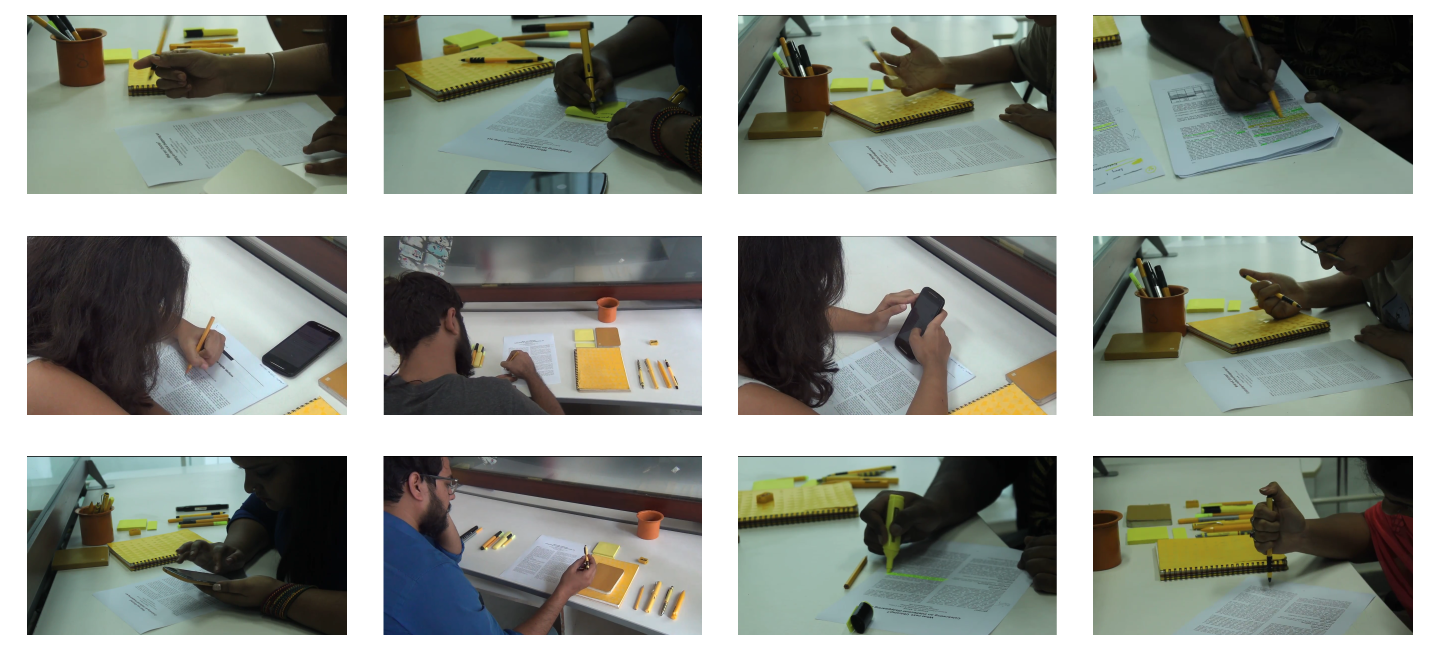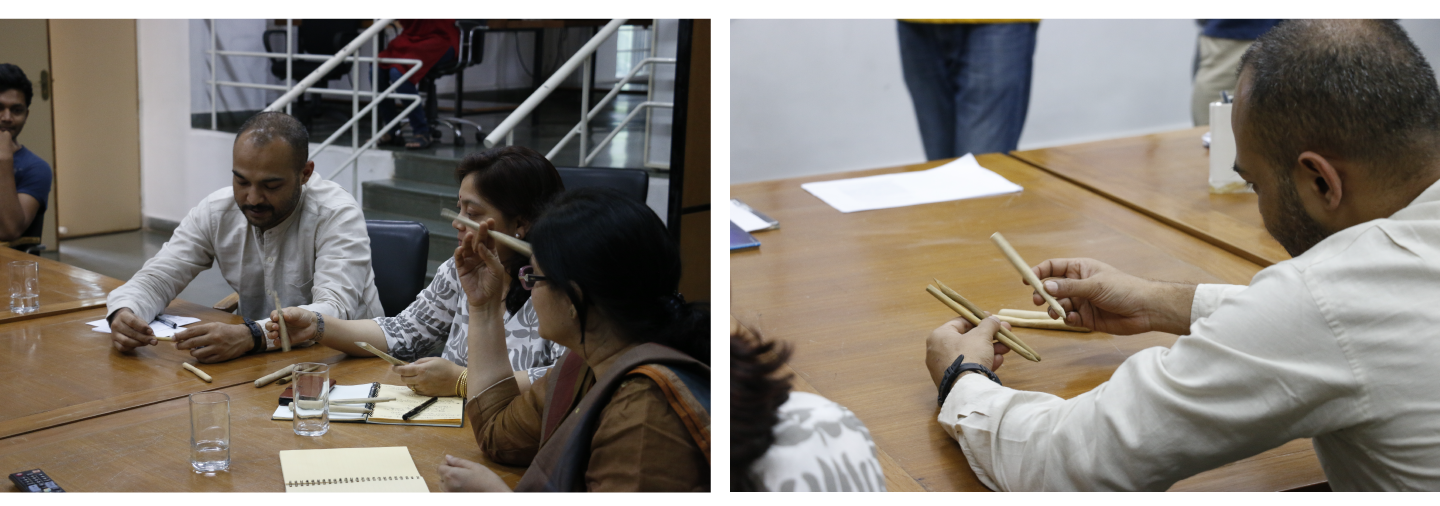🖊️ Focus Pen: Tangible User Interaction
Overview
As a part of the curriculum course in Ubiquitous computing module at NID (in 2017), the students were
expected to go through a lot of
research papers as reading material to build an understanding of what Ubiquitous means and their
significance.
At the same time we were tasked with identifying a problem and solve it using the principles of Ubiquitous
computing.
During the course, I observed that most of the classmates spoke about the struggle and frustrations; at
maintaining
focus and being constantly zoned out while comprehending the information in those materials.
Bro! I can not read through the papers, I am getting zoned out every now and then while reading them.

Problem statement
Not being able to maintain FOCUS and comprehend
the
information available in printed reading materials by the students / researchers.
Proposed solution: The Focus Pen + Companion Dock

Tangible User Interactions : How to use?

User Interface Design

Please visit our project available on behance where Andre Parr has done a great job at presenting the product "Focus Pen".
Data flow in ecosystem

Design process
We started off with initial discussions amongst ourselves to build an understanding of
- ■ What is Ubiquitous Computing (or Ubicomp)? and
- ■ What could be the desired product to qualify as a ubicomp product?
We found ubicomp is an IoT concept which enables computing by taking inputs from anywhere, at anytime, using any device and outputs data in any format necessary.

While looking for answers to what could be an ideal device to solve the problem at hand, we realised that a pen / pencil is the most versatile and widely used object in the context i.e while studying. Users generally used pen / pencil for taking notes, making annotations, traversing between lines while reading, or just to fidget.
Therefore, we thought of rethinking the idea of note taking and research by reimagining the pen as a connected device.
Research
The user experiement was designed in such a way that it comprised of 2-3 primary research methods:
- ■ Personal Interviews
- ■ Contextual Inquiry (in a controlled environment)
- ■ Observations
In which we invited various students from different departments of our college as participants.

User experiment designed & conducted by Hemant; sessions recorded by Akshay & Andre.
💡 Observations / Insights
- ■ Some users don’t want to defile the document
- ■ Puts pen back in its dedicated space
- ■ Fidgeting speed relative to concentration

- ■ Google search on mobile used to look up words
- ■ Some use a notebook/some write in the margins for note-taking
- ■ Mobile phone is a major distraction
- ■ Preference of pencil is observed among most users
- ■ Use the pen to traverse the reading
- ■ One user used sticky notes
Ideations & quick prototyping
To get a better understanding of form factor of a pen / pencil, we dicided to design / sketch different pen forms which could take care of the insights discovered from our primary research. We made 9 pen prototypes using bamboo, and went back to our users (in this case, students) to see their reactions and use behavior with new forms.


Testing & feedback
After few discussions with our primary users (students / researchers), we presented our concept to faculties and seeked their feedback. All these excercises helped us iterate and decide upon the final form of the pen and also made us realise the need for a companion dock.

We then proceeded with mind-mapping of the various components and features that the proposed product should have.

Made using Coggle. [Please zoom-in to view the map clearly.]
Key Takeaways

My team: Andre Parr, Hemant Gupta and Akshay Khurana (From left to right)
We had different strengths in 3D modelling, graphic design and user research. This collaboration helped all of us to learn from each other's strengths.
- Learnt a great deal while planning and executing an user experiment (that too in a controlled environment);
- Having team members having different strengths, I feel my visual aesthetic sense has improved a great deal.
- I realised what is the importance of thorough secondary research; we could not find any product similar to ours in terms of features and use cases. However, later I came across "NoteOn Smartpen" project by Nick Ames, who had already made a prototype of a smart pen.
- Building bamboo pen forms and companion dock(with MDF & Acryllic) was a great experience of material understanding.
- Learned from our mistakes and success while making the video prototype from storyboarding, screen framing, lighting and camera shots.